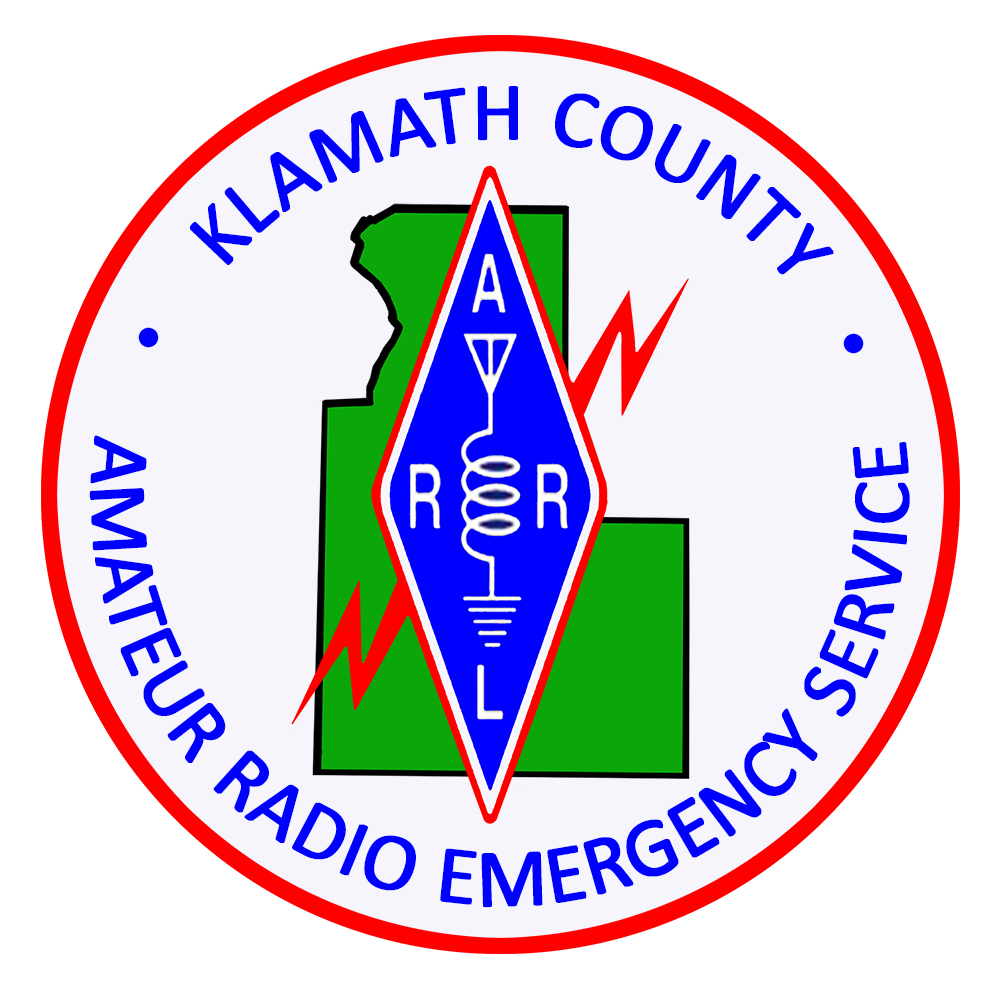This page is under construction and will take some time to complete. Initially, we will focus on links to outside resources. Over time internal documentation will be added.
Klamath ARES is working with other local groups and agencies to develop a county-wide emergency IP data network. The amateur platform we are using is AREDN. There is a substantial AREDN presence already in Oregon and we have tunnel connections to the greater network as we build out the infrastructure and local network. Once the local network and infrastructure are substantively in place we will shift energies to longer-range RF connections making tunnels redundant.
A significant tool we will be using over the networks is VoIP (Voice over Internet Protocol). VoIP can be divided into three primary areas:
- VoIP telephone: Hamshack Hotline and Hams Over IP are two broadly available amateur radio networks. All you need is a phone (notes below).
- Asterisk PBX: PBX stands for Public Exchange, a PBX is a server VoIP phones connect to so they can communicate with other phones on a network. Asterisk is a freeware PBX and is the foundation of the local PBX we are building for EmComm in Klamath County. There are other Asterisk PBXs on the AREDN network already. There is a graphical front end for managing an Asterisk PBX called Free PBX.
- AllStar: AllStar is a distribution of Asterisk that is designed specifically to interface radios over VoIP.
- This can be used as a repeater controller
- A digital radio gateway for protocols like DMR, D-Star, Fusion, IRLP, and EchoLink, etc.
- It can also be used to incorporate radios into a PBX system.
- A couple of examples for receiving only would be, dialing an extension to listen to an airport ATIS weather radio or NWS weather radio.
- This could also be used to receive and transmit over an amateur or agency radio or repeater through any phone on a PBX.
Starting Points
Phone Instruments
The amateur radio VoIP networks lean towards the Cisco SPA500 and SPA300 series phones. Virtually any SIP phone will work, but the SPA504, SPA508, and SPA525 are the easiest starter phones as they are well integrated into the existing systems and readily supported online and in our ARES unit. The unit has been building a cache of SPA508 and SPA525 phones for deployment. The used market (eBay) is full of SPA500 series phones from $30-$70. Access to the Amateur Radio VoIP networks requires an amateur license and you need to have a phone in your possession before provisioning a line.
If you have any questions please ask Jon KK6GXG or Charlie K7ATK.
AREDN Node
The Amateur Radio Emergency Digital Network has a broad range of uses. Essentially, any service you can provide over the internet can be provided over AREDN. Web servers, file servers, chat, video feeds, VoIP, and all of the hybrids and derivations you can think of. For our local network, we are focusing on web, files, video, and VoIP services. There are a number of support possibilities for agencies integrating APRS, weather services, radio monitoring, databases for shelters and damage assessment, and remote sensing.
The simplest way to get started with AREDN is a home QTH tunnel node. The easiest starting point hardware-wise is the MikroTik hAP ac lite Dual-concurrent Access Point (RB952Ui-5ac2nD-US) (on Amazon https://amz.run/603X running $50-$55)
Why this specific unit? First and foremost it provides the best bang for your buck getting started. It uses 2.4GHz for the AREDN network over RF, 5GHz for an access point, you can tunnel to the AREDN network over your local internet connection, and it allows for local connections including a PoE port for a 5V VoIP phone like the SPA504 and any experimental services you might want to try out. Really, the only thing it doesn’t do is long-range RF point-to-point connections to other nodes. This device gives you most of the AREDN possibilities at the lowest price point and gets the ball rolling.
Expanding with Point-to-Point connections is both simple and complex. It is simple in that you are pointing two directional antennas at each other to establish a connection, whether it is yard-to-yard, to a station down the block, or to a mountaintop link. It is complex in that the environment has a lot to do with the band and what equipment to use. There really isn’t a one-radio-does-it-all option. Another complication is we don’t have the mountaintops set up yet so choosing mountaintop link radios is impossible at the moment.
For now, Point-to-Point connections need to be worked out case by case.
During the flash process, you will need a tool, the Tiny PXE Server. If you are unable to find a newer version online, I have an older version available here.
If you have any questions please ask Jon KK6GXG or Charlie K7ATK.
Links
AREDN
Amateur Radio Emergency Digital Network https://www.arednmesh.org/
Willamette Valley Mesh Network https://willamettevalleymesh.net/
Amateur Radio VoIP Phone Networks
Hamshack Hotline (HH) https://hamshackhotline.com/
Hams Over Internet Protocol (HOIP) https://www.hamsoverip.com/
Deeper Down the VoIP Rabbit Hole
Asterisk PBX https://www.asterisk.org/
FreePBX (a graphical front end for Asterisk) https://www.freepbx.org/
AllStar Link (repeater control, digital radio, radio interface) https://www.allstarlink.org/
Additional Information and Beginner Links
AREDN Beginners Guide v19 W6BI, N1ZKW
CQ January 2017 Amateur Radio Emergency Digital Network
Oregon HamWAN Current Status 2021 Dec
Mesh Networks/AREDN by Rob Redford KG7LMI EC Yavapai County ARES
QST June 2017 – AREDN A High-Speed Data Network
Page last updated 3 JAN 2023
